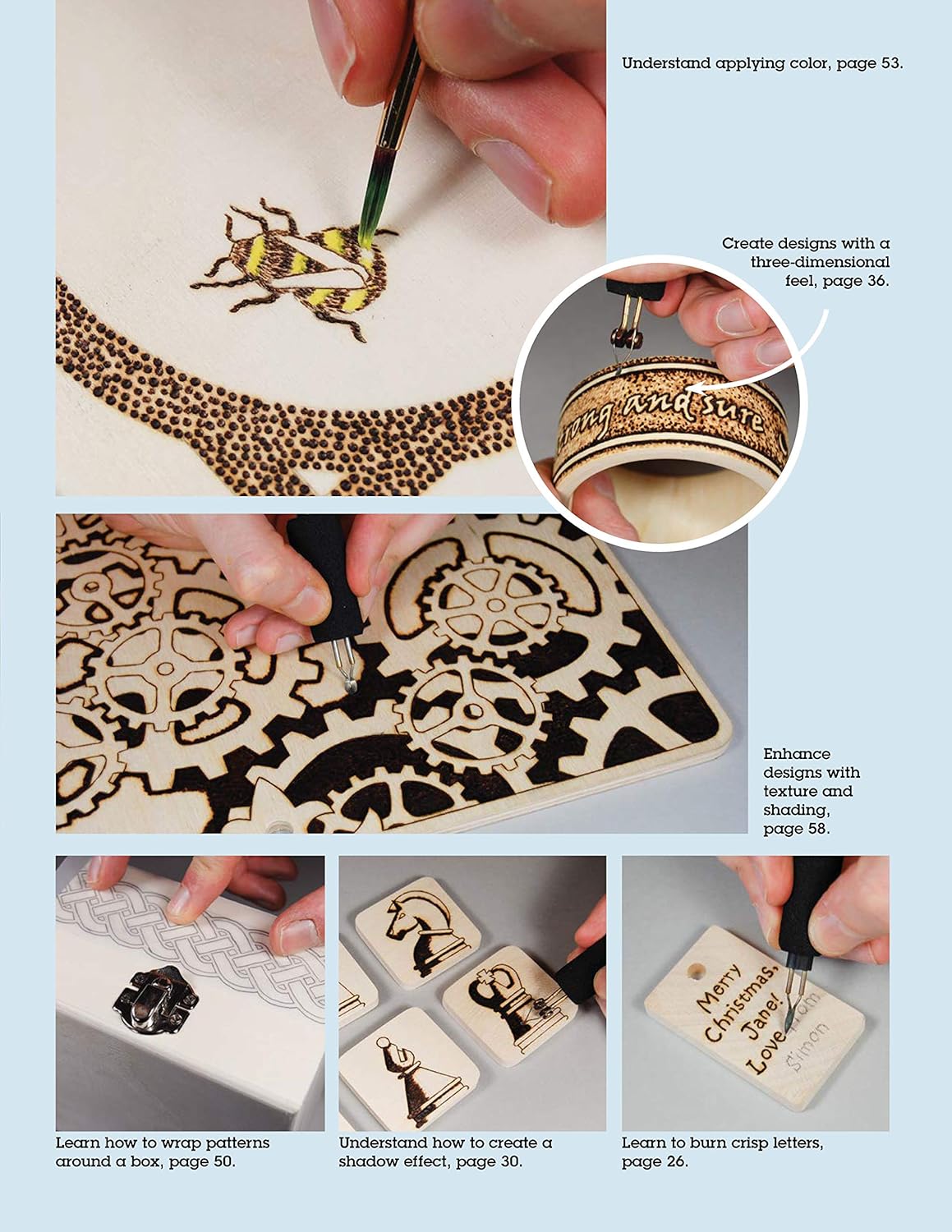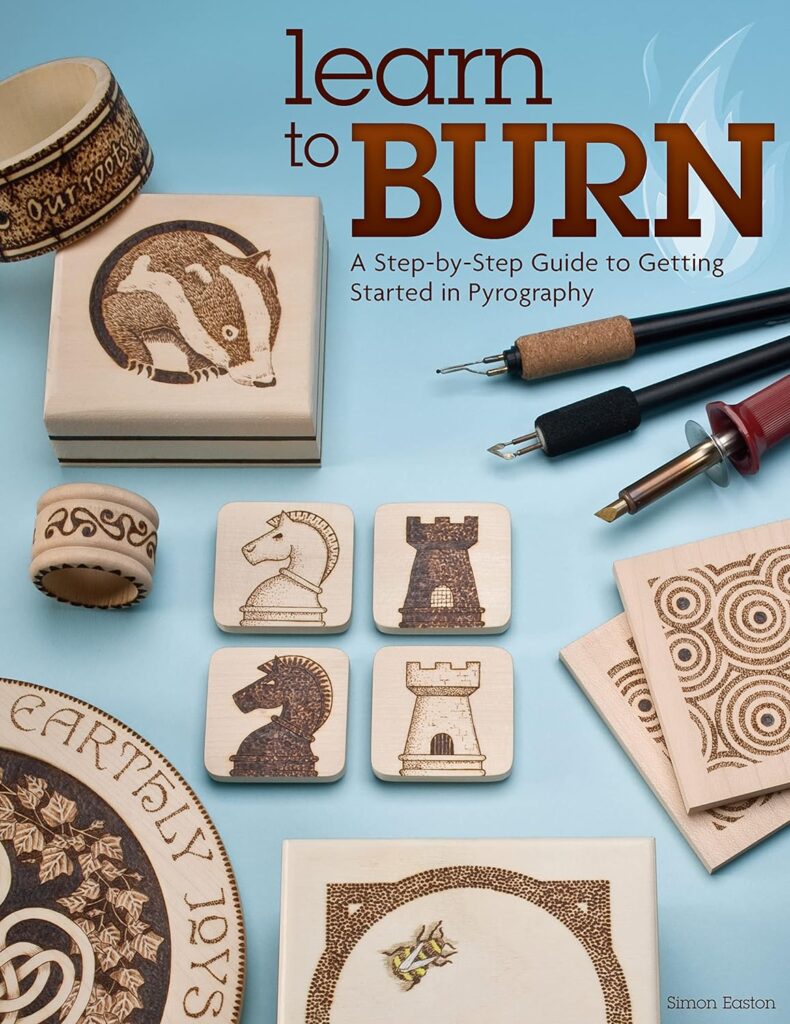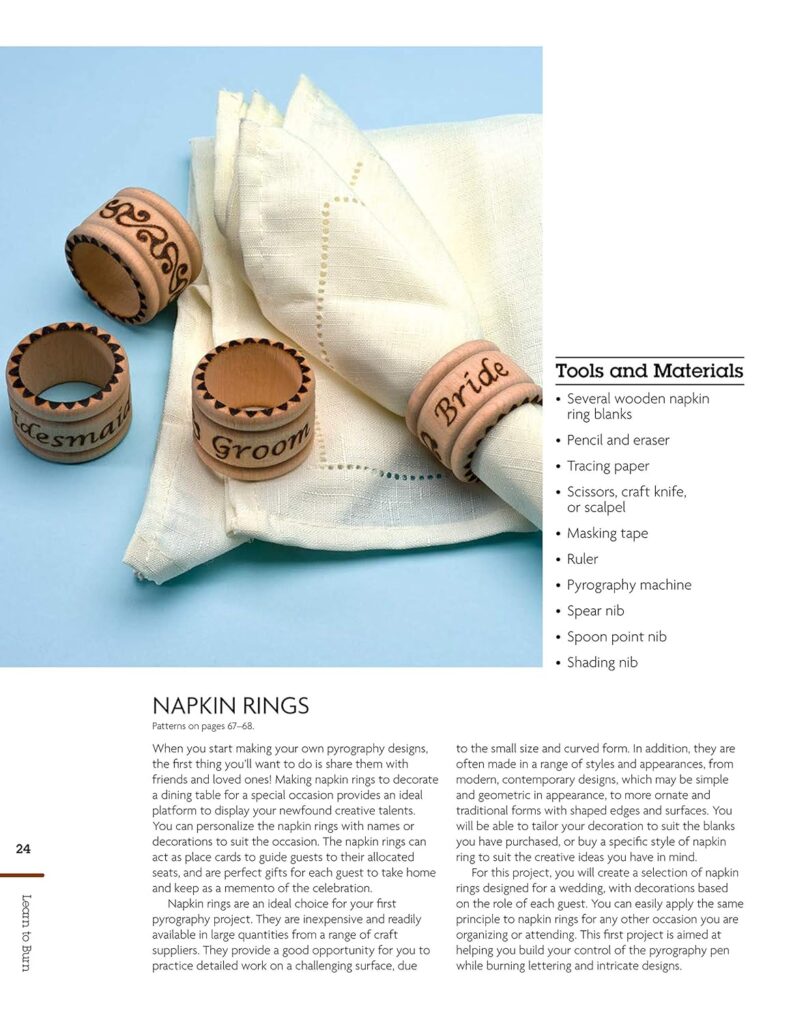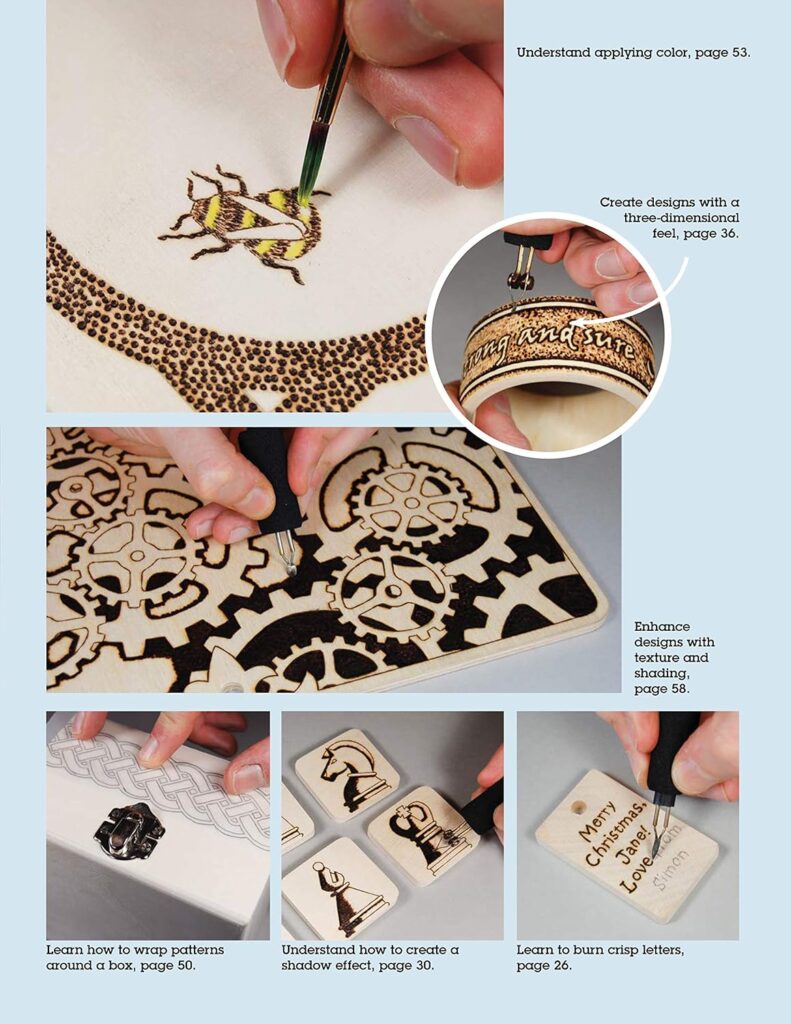Are you looking for a new creative outlet? Something a bit more intriguing than knitting but less potentially hazardous than chainsaw carving? Well then, let me introduce you to “Learn to Burn: A Step-by-Step Guide to Getting Started in Pyrography (Fox Chapel Publishing).” Sound like something you’d enjoy? Sit back and grab a cup of tea as we take a look at what makes this guide a gem for both the creatively inclined and those who think they could burn down the house by merely holding a soldering iron.
This image is property of Amazon.com.
What is Pyrography?
Ah, pyrography, where art meets fire. Literally translated as “writing with fire,” pyrography involves burning designs onto wood, leather, or some other suitable material. It’s like those childhood days when you’d take a magnifying glass to ants—but far more artistic and considerably less sociopathic.
The Basics of Pyrography
In essence, pyrography can be as straightforward or as complex as you want. The technique involves using a heated tool to burn patterns, shapes, or images onto a surface. Think of it as painting, but with heat. Are your hands steady enough to handle intricate designs? If not, “Learn to Burn” offers baby steps to help you develop your pyrographic prowess.
Benefits of Pyrography
- Therapeutic – The constant, repetitive nature of burning patterns can be incredibly soothing.
- Highly Personal – Each piece you create is unique.
- Perfect for Gifts – Imagine the joy of giving someone a custom gift burnt by your own hand!
| Aspect | Description |
|---|---|
| Relaxing | The repetitive motions have a meditative quality. |
| Creative | Endless opportunity for personal expression. |
| Rewarding | Makes for unique, heartfelt gifts. |
Why “Learn to Burn” Should Be Your Go-To Guide
Okay, so now you’re intrigued. But why should you choose this book among a plethora of arts and crafts resources out there? Let’s delve deeper—uh, okay, read on.
The Authors Know Their Stuff
Let’s begin with credibility. “Learn to Burn” is published by Fox Chapel Publishing, a well-known entity in the world of crafting manuals. They might as well change their name to “Fox Chapel Wizardry” because this book seems like a spellbook masquerading as an instructional guide.
Easy to Follow Instructions
This isn’t one of those guides where you need a Ph.D. in Fine Arts to understand the process. The book breaks things down so that even a caveman would say, “Oh, fire art. Me likey!” Seriously, it’s designed for beginners—whether you’re a nervous newbie or someone who hasn’t touched a crafting tool since making macaroni art in kindergarten.
14 Step-by-Step Projects
One of the highlights is undoubtedly the 14 projects laid out in the book. These aren’t projects that will have you scratching your head and reconsidering your life choices. Each project is described in digestible steps with how-to photos that make things look almost criminally easy.
Visual Learning at Its Best
What’s great about this book is that it understands the importance of visual aid. Sometimes words fail us; you stare at a step for ten minutes, wondering if you grew another head because nothing makes sense. This book is packed with how-to photos and illustrations. Your eyes will thank you.
| Feature | Description |
|---|---|
| Authors’ Expertise | Seasoned in the field; fox-esque wizardry. |
| User-Friendly | Simple, clear instructions tailored for beginners. |
| Step-by-Step Projects | 14 projects that build your confidence and skill incrementally. |
| Visual Learning | Filled with easy-to-follow photos and illustrations. |
This image is property of Amazon.com.
Breaking Down the Projects
Now, let’s get into the nitty-gritty of the 14 projects included in the book. What could you be creating within weeks of using this guide?
Project Variety
From your basic nature designs to intricate patterns that you could proudly display in your living room, this book covers all corners. Whether you want to burn a beautiful landscape onto a piece of wood or create a jaw-dropping portrait, you’re covered.
Ease of Learning
The gradual progression in the difficulty of the projects is one of the strengths of “Learn to Burn.” The earlier projects are like dipping your toes in the kiddy pool before diving into the deep end. Before you know it, you’ll be proficient enough to take on custom work, perhaps even venturing into the volatile world of commissions!
Bonus Patterns for Added Creativity
As if 14 projects weren’t enough, “Learn to Burn” gifts you with 50 bonus patterns. My God, to have such generosity bestowed upon us! These patterns provide additional room for creativity and can act as a springboard for your own imaginative ideas.
Flexibility in Use
These bonus patterns can be used verbatim or modified to suit your liking. That means if you fancy tweaking a leaf here or adding a sunburst there, go right ahead! This is where the book really shines—its ability to cater to traditionalists and free spirits alike.
Endless Inspiration
The sheer number of patterns ensures you’ll never run out of ideas. From creating personalized gifts to decking out your apartment with unique burnt wood pieces, the sky is practically the limit here.
This image is property of Amazon.com.
The Equipment You’ll Need
Don’t worry, you won’t need to take out a second mortgage to get started. The equipment required for pyrography is minimal and relatively affordable.
Basic Tools
To begin with, a pyrography pen or burn tool is essential. These come in various makes and models. Some look like they could solder metal; others look only slightly more menacing than a beauty salon hot brush. The book covers the pros and cons of different types and even suggests brands.
Additional Supplies
You’ll also need an array of wood surfaces to practice on. You can pick these up from your local craft store or improvise with some old cutting boards if you’re into recycling. You might also want to have some sandpaper on hand, along with carbon paper for transferring designs.
| Tool | Purpose |
|---|---|
| Pyrography Pen/Tool | The main instrument for burning designs. |
| Wood Surfaces | Material to practice and create pieces on. |
| Sandpaper | To smoothen the wood surface before and after burning. |
| Carbon Paper | Useful for transferring patterns onto the wood. |
Working with Different Materials
Sure, wood is the go-to material for most pyrography projects, but why stop there? This guide compels you to get adventurous—leather, gourds, paper, even bones (yes, bones) can be your canvas.
Wood
Different types of wood produce different results. Softwoods like pine are easier to burn but might blur out your fine details. Hardwoods, while pricier, hold up better for intricate designs. This guide helps you navigate these choices so you don’t end up wanting to burn something entirely different out of frustration.
Other Materials
Leather offers a luxurious canvas that can elevate your pyrography from craft to art. The book also delves into using materials like gourds and bones (macabre, I know, but rich in potential for those with darker aesthetics).
Safety and Best Practices
This isn’t just another book that hands you a hot stick and wishes you the best. Safety is paramount when dealing with heated tools.
Basic Safety Tips
You’ll get a thorough introduction to safe practices, from how to set up your workspace to tips on avoiding burns. Don’t be that person who decorates their wood beautifully but sports a pockmarked arm as a result.
Ventilation is Key
Burning materials release fumes—some more toxic than others. Learn to Burn emphasizes the importance of good ventilation, perhaps even suggesting a good air purifier if your workspace is indoors.
First Aid
In a book where fire is your medium, it would be almost irresponsible not to include a section on first aid. The good news? It’s there. Minor burns, how to treat them, what creams to use—this guide has got your back, literally.
Building Your Skills: Advanced Techniques
Once you’ve got the basics down, there’s room to spread your wings. Advanced techniques like shading, mapping, and texturing are covered.
Burning and Shading
Basic designs often involve just outlining your pattern, but the real allure comes from shading. Proper shading can give your pieces a three-dimensional effect that will leave your audience agog and begging to know your secrets.
Texturing
Adding texture to your designs can simulate different surfaces—from animal fur and feathers to bark and leaves. Again, these techniques are presented in simple, bite-sized steps. You won’t have to guess your way through it.
The Artistic Process
The artistic process is an emotional journey, and every true artist knows it. “Learn to Burn” guides you through the emotionalism of creating a piece, starting from an abstract idea to the final imprinting.
Conceptualization and Design
It starts with you—what do you want to create? Inspirational ideas and sketching methods are provided to help you draft a design. You’re part of the creative conversation, not a mere follower of instructions.
Execution
Executing your idea from paper to wood (or leather or bones) can be nerve-wracking. All those blank surfaces mocking your artistic ability. Chapters dedicated to transferring your ideas onto your medium help smoothen this intimidating gap.
Emotional Investment
Unlike a pencil, there’s a finality to burning your design. This finality connects you emotionally to your piece, a theme subtly emphasized throughout the book. You’ll appreciate your creations more because they literally took a lot out of you—mental prowess and steady hands, and maybe even a bit of your sanity.
Wrapping It All Up
In conclusion, whether you’re new to pyrography or a seasoned burner looking for more structured guidance, “Learn to Burn: A Step-by-Step Guide to Getting Started in Pyrography (Fox Chapel Publishing)” is a worthy addition to your library. The detailed step-by-step projects, coupled with visual aids and a plethora of bonus patterns, make this guide valuable for anyone wanting to tap into the fascinating world of fire art.
A Personal Note
Pyrography is not just another craft; it’s a journey into understanding how heat and art can create something uniquely beautiful. With this book by your side, you’re bound to stumble and burn your way into becoming a true artisan. Art is supposed to set your soul on fire—quite literally in this case. So get your pyrography pen ready, find a willing piece of wood, and start your fiery journey toward creating something beautiful.
Disclosure: As an Amazon Associate, I earn from qualifying purchases.







